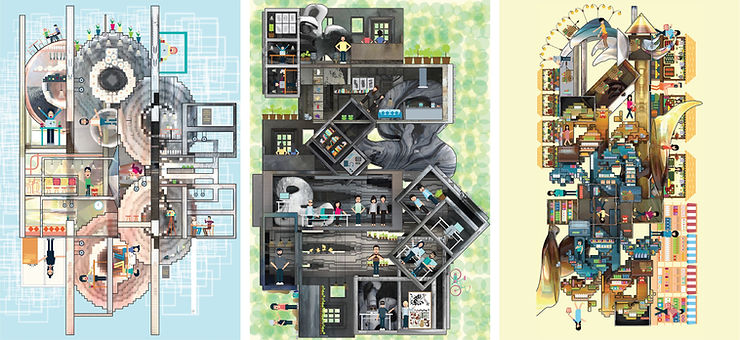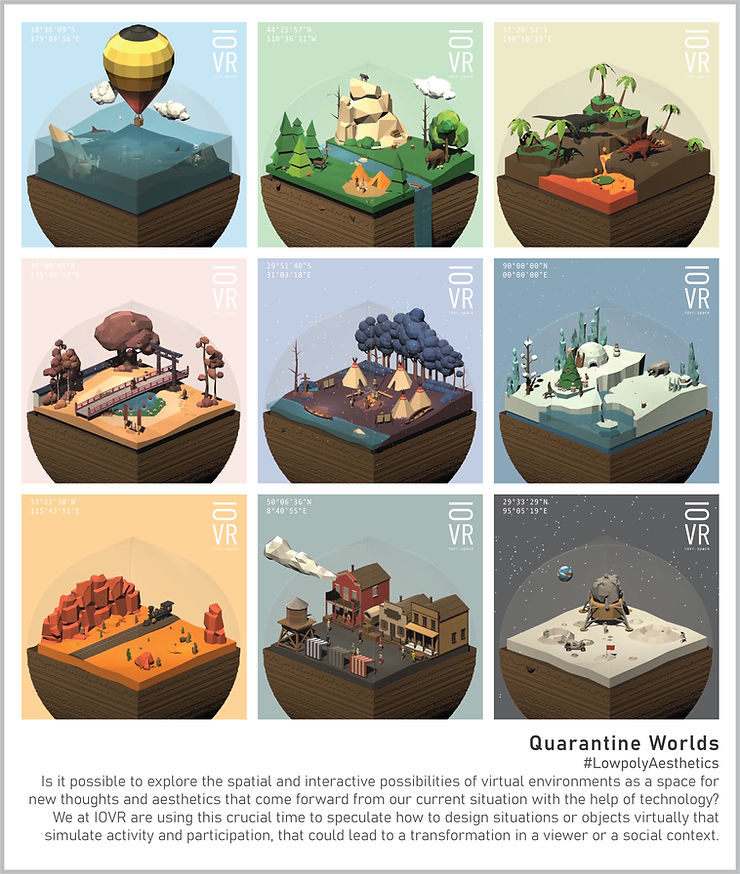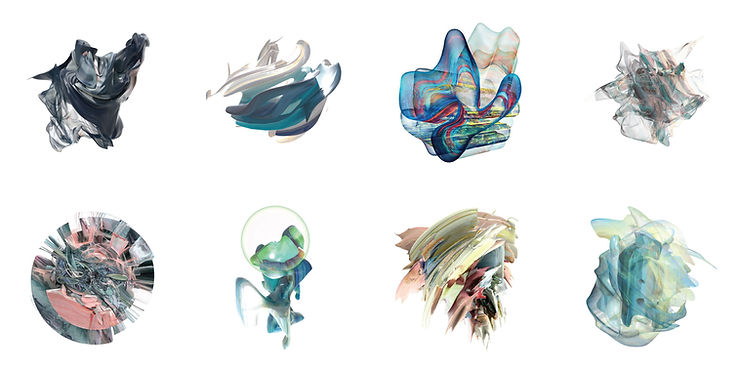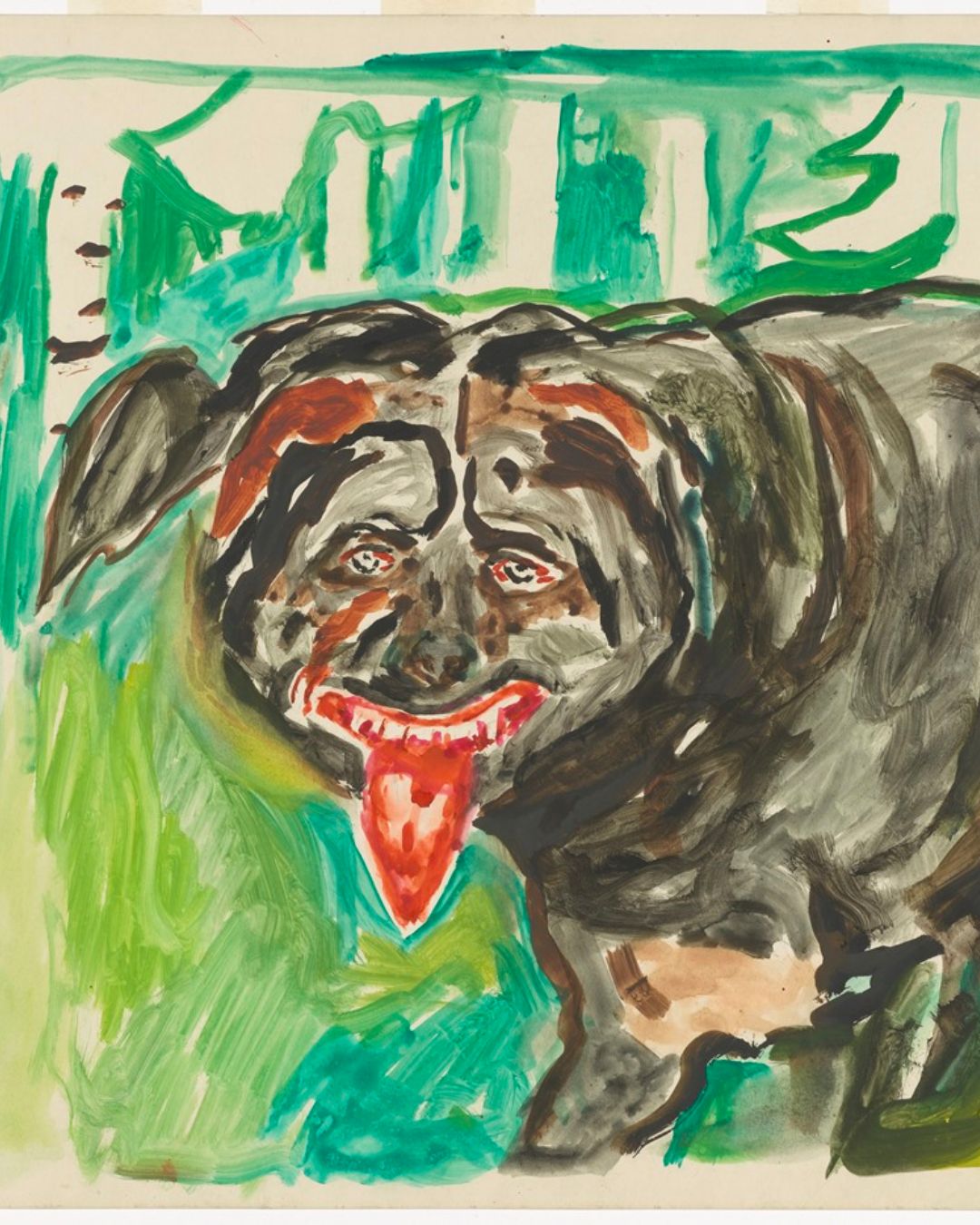As our routines changed from podcasts during early morning traffic to work hours spilling into our personal lives, the virtual world has transformed for us. The deep dissociation between our “real lives” and digital lives is slowly blurring. Social situations that were loaded with personal touches, looking into people’s phones and the sounds of people’s voices are now done on digital video calling platforms (with a lag). As an artist, curator and architect, Anokhi Shah has been investigating the intersection of our realities and virtualities even before the pandemic hit – creating digital spaces and virtual interpretations of everyday things.
She is the founder of IOVR, an interdisciplinary design research start-up founded on the premise of technological innovation flirting with new media narratives. Her interest lies in exploring space in relation to the arts to infuse interactive design with original ideas through contemporary digital mediums. As Anokhi joins us in a conversation, she discusses her fascination with questions of aesthetics, her projects –present and past– and the new meanings that the pandemic has brought into our lives.
1. You work in the intersection between art, architecture, and new media. What fascinates you to work in this space and how do you think this space has evolved over the pandemic?
I am constantly investigating the effects of the digital in its complete takeover of space/spatial perceptions. Questions of aesthetics and different forms of representations are of great importance and most projects are accompanied by a strong narrative to make them more playful and engaging.
I have been investigating what this pandemic has done to our realities and I think slowly we are deforming and distorting our means of interactions and creating new virtualities.
2. Why did you choose Instagram to feature your projects? How do you think its engagement corresponds to your vision of the project?
Architects design space as a medium. Besides having functionality to it, these spaces also become the main platform for interaction. Architecture is built on transition. Thresholds help in organizing these transitions and open up spaces. They are perceived as barriers/beginnings and act as boundaries for spaces. The digital screen acts as the threshold element that connects the real and virtual. Many social media apps are designed on this phenomenon. The boundary here is transparent.
Instagram; one of the most popular internet-based photo-sharing applications is an ideal example that works on this phenomenon. Instagram allows users to add photos/videos to their profiles and add additional data using description, locations, tagging, and hash-tags. This acts as a threshold in the users’ subjective world. The medium of Instagram allows us to create complex spatial sequences and spatial structures. This threshold element can be used as perceptual and cognitive architectural access to immersion in architectural experiences.
Built on these ideas I created Paw_cosm, an architectural graphic novel that can be read over Instagram.

3. Tell us a bit about the process behind your project Quarantine Worlds. What made you choose the locations included in the projects?
The project Quarantine Worlds is a speculative work that came up as a response to being in quarantine; a major experiment in how these environments produce new ways of life. I asked myself: how do the new aesthetics of digital tools translate and mediate these future worlds? Is it possible to explore the spatial and interactive possibilities of virtual environments as a space for new thoughts and aesthetics that come forward from our current situation with the help of technology?
The locations for these worlds were chosen according to my subjective memories and thoughts – places I would have liked to be at or wondered how they would be in quarantine times.

4. What do you think virtual spaces mean to people now? What is your opinion of the duality of the current times – straddling digital and real worlds simultaneously?
It is safe to say by now that we all have learned to go about doing our things virtually. It takes different forms at different scales – from social media apps to zoom calls to mixed reality video games. The digital is now completely woven into our contemporary life- creatively, politically, economically, and socially in manners both obvious and nearly invisible. With the help of emerging technologies, almost all aspects of social life are enhanced within this digital metaverse – from love and play to workspace and raves; intensifying the results on the daily.
5. As an architect, curator, and artist, you have a deep understanding of audiences and the way they react to art. In what way does this affect your practice?
The two major factors that I incorporate in my practice are immersion and playfulness. Both which require active audience participation.
The Art of Immersion is dedicated to the transforming experience of reality through immersive digital visualization systems. The idea of play can transform real-world references, meanings, and ideologies, and can hence function as political and social entities in media – in a positive, enlightening way or in the sense of seductive propaganda.
6. Describing your project @blonde_blotch, you have said, “The page features objects with some emotions.” What are you trying to communicate through this?
Vikto Shklovsky in ‘Art as Technique’ said, “The purpose of art is to impart the sensation of things as they are perceived and not as they are known. The technique of art is to make objects ‘unfamiliar’, to make forms difficult, and length of perception is an aesthetic end in itself and must be prolonged. Art is a way of experiencing the artfulness of an object.” He went on to say, “Art is thinking in images.”
The idea was to apprehend objects only as shapes with imprecise extensions; we do not see them in their entirety but rather recognize them by their main characteristics. Blonde_blotch is an ongoing collection of speculative objects (3D) and a part of the #everyday sub-culture existing on Instagram.

7. How do you think technology can change the way in which we perceive art? In such artworks, how separate are the entities of technology and art from each other?
Emerging technologies are usually adapted by contemporary artists for creative and artistic applications from the science and engineering fields. Going beyond its traditional constraints, these technologies can be explored for developing new aesthetics and new modes of interaction. These bring new images and materials and increase aesthetic standards. These approaches are usually experimental and empirical; they become alluring factors for contemporary artists.
Contemporary artists usually approach technology in two ways: one as a tool, second being the medium. Artists who view technology as a tool often prefer to keep it invisible, whereas, in contrast, artists who view technology as a medium typically prefer to enhance its visibility and reveal all the internal operations of the medium. The creative concept here is essentially dependent on a thorough understanding of the technology used. Eventually, what begins as an artistic and speculative experiment materializes and new works of art emerge.
You can visit her project Blonde_Blotch here, and Paw_Cosm here. Check out the work done by IOVR here!
Want to further your interest in the intersection of art and technology? Check out our blog on how AI has made its place in the art world!




